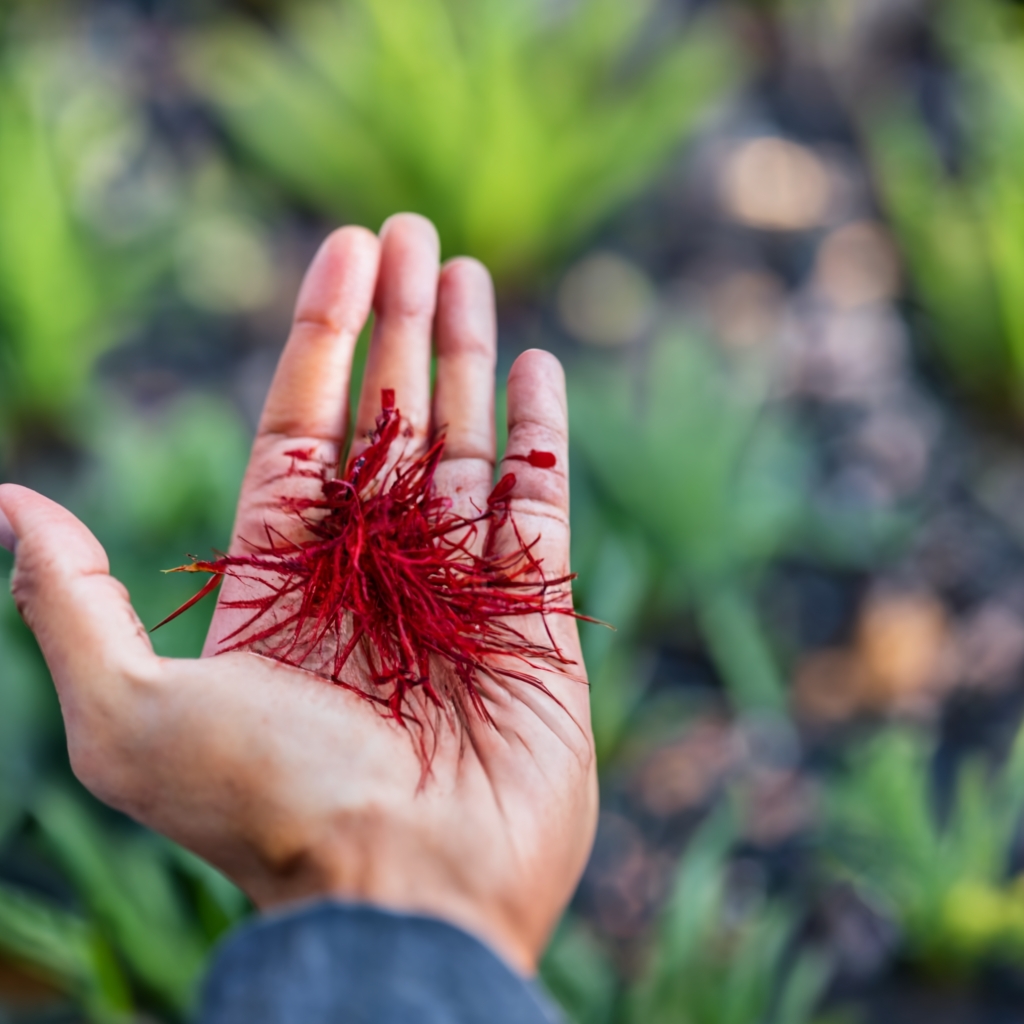Embarking on the Saffron Journey: A Golden Harvest Awaits
Welcome to the vibrant world of saffron cultivation, a journey that promises not only a golden harvest but also a delightful gardening experience. Saffron, renowned as a golden spice, holds a special place in culinary and medicinal realms, offering a rich blend of flavor and health benefits. Here, we delve into the fascinating aspects of saffron cultivation, particularly focusing on one pivotal question:
How many times a year can you harvest saffron? Saffron, derived from the flowers of the Crocus sativus plant, can generally be harvested once a year. This is because the plant blooms in the fall, providing a short window for harvest. During this period, it is vital to harvest the flowers early in the morning to obtain the best quality saffron threads. Implementing proper cultivation techniques can ensure a bountiful and quality yield during this annual harvest period.

🌸 Saffron Secret: Did you know? Saffron has been cherished for its unique properties for over 3,500 years, making it one of the oldest known spices! 🌸
Before we venture deeper, let’s acquaint ourselves with some noteworthy facts about saffron:
- It is derived from the flower of Crocus sativus, commonly known as the saffron crocus.
- Saffron threads are actually the stigmas of the flower, which are harvested by hand.
- It is highly valued for its culinary, medicinal, and dyeing properties.
- The spice is known for its vibrant color and unique flavor, adding a golden hue and a rich aroma to dishes.
As we navigate through the nuances of saffron cultivation, we will explore the optimal times for harvesting, the best practices to enhance yield, and tips to overcome common challenges. So, gear up for an enriching journey into the world of saffron farming, where a golden harvest awaits you!
The Lifecycle of Saffron: A Year-Round Journey
Embarking on the journey of saffron cultivation is akin to stepping into a world of golden hues and aromatic breezes. Understanding the lifecycle of this precious spice is essential to harvesting it at the right time. Let’s delve into the fascinating growth cycle of saffron, including the much-asked question: “saffron time to harvest”.
Seasonal Blooms: A Burst of Golden Hues
Saffron plants are known for their seasonal blooms, gracing gardens with their vibrant colors and unique fragrance. But how often does saffron bloom? Typically, the saffron crocus blooms once a year, during the autumn season. This period marks the beginning of the harvesting season, where the precious stigmas are collected to create the golden spice we all cherish.
🌸 Saffron Secret: Ensure to mark your calendar for the autumn season, as this is the prime time to witness the saffron crocus in full bloom and to begin your harvesting journey. 🌸

Yearly Growth: A Perennial Delight
One of the most common questions budding saffron cultivators have is, “Does saffron grow back every year?” The answer is a resounding yes! Saffron is a perennial plant, meaning it graces your garden with its presence year after year. This characteristic makes it a delightful addition to any garden, promising a yearly bounty of golden stigmas.
Understanding the lifecycle of saffron is a stepping stone to successful cultivation. From planting the bulbs to witnessing the burst of golden hues during the blooming season, each phase offers a unique experience. As you venture further into the world of saffron cultivation, keep an eye on the changing seasons and prepare yourself for the exciting “saffron time to harvest”.
Harvesting Saffron: A Detailed Guide
Embarking on the journey of saffron cultivation is a rewarding experience, especially when it comes to the harvesting phase. In this section, we will delve deep into the nuances of saffron harvesting, providing you with a comprehensive guide to ensure a fruitful yield.
Step-by-Step Guide to Saffron Harvesting
Harvesting saffron is a delicate process that requires precision and care. Here, we will explore the step-by-step process of saffron harvesting, ensuring you are well-equipped to handle this precious spice with the utmost care.
- Identifying the Right Time: The ideal time to pluck saffron is during the early morning hours, when the flowers are still closed to preserve the quality of the stigmas.
- Harvesting the Flowers: Gently pluck the flowers from the base, ensuring not to damage the stigmas inside.
- Extracting the Stigmas: Once harvested, carefully extract the stigmas, which are the saffron threads. Typically, you will find 3 saffron threads per flower.
- Drying the Stigmas: Lay the stigmas on a flat surface and allow them to dry naturally to preserve their aromatic properties.
🌸 Saffron Secret: To enhance the quality of your saffron harvest, ensure to handle the flowers gently and use a clean, dry surface for drying the stigmas. 🌸
Armed with these insights, you are now ready to embark on your saffron harvesting journey. Remember, patience and precision are key to a successful harvest. Happy Saffron Harvesting!
Maximizing Your Saffron Yield
As a saffron cultivator, one of your primary goals is to maximize the yield of your crop. In this section, we will explore various strategies on how to increase the yield of saffron, ensuring you get the most out of each planting season.
Effective Tips to Enhance Saffron Yield
Here are some proven tips that can help you significantly increase your saffron yield:
- Soil Preparation: Ensure the soil is well-drained and rich in organic matter to provide a nurturing environment for the saffron bulbs.
- Optimal Planting Density: Plant the bulbs at a density that allows sufficient space for each plant to grow and flourish.
- Proper Irrigation: Maintain a consistent irrigation schedule to provide the plants with the necessary moisture without waterlogging the soil.
- Pest and Disease Management: Implement effective pest and disease management strategies to protect your crop from potential threats.
🌸 Saffron Secret: Regularly monitor the growth of your plants and adjust your cultivation practices accordingly to ensure a healthy and abundant yield. 🌸

Understanding Saffron Yield
When it comes to understanding the yield of saffron, it’s essential to know the potential output of each plant. On average, one saffron plant can produce about 0.006 ounces (0.17 grams) of saffron. Therefore, to obtain an ounce (28.35 grams) of saffron, you would need approximately 4,725 plants.
Embarking on the journey of maximizing your saffron yield requires a blend of knowledge, patience, and the right cultivation practices. By following the tips mentioned above, you are well on your way to achieving a bountiful harvest.
Challenges and Solutions in Saffron Cultivation
Embarking on the journey of cultivating the precious saffron spice can be both rewarding and challenging. In this section, we will delve into why saffron is considered hard to grow and offer solutions to common problems encountered in saffron cultivation.
Why is Saffron So Hard to Grow?
Saffron cultivation presents a unique set of challenges, primarily due to its delicate nature and specific growth requirements. Here are some common difficulties faced by growers:
- Climate Sensitivity: Saffron requires a specific type of climate, characterized by cold winters and hot, dry summers.
- Soil Requirements: The soil needs to be rich in organic matter and well-drained to prevent waterlogging and root rot.
- Labor-Intensive Harvesting: The harvesting process is labor-intensive as it requires the delicate stigmas to be hand-picked.
Solutions to Common Problems
Despite the challenges, there are several strategies that can help you succeed in saffron cultivation:
- Research and Planning: Conduct thorough research on the optimal conditions for saffron cultivation and plan accordingly.
- Soil Preparation: Invest time in preparing the soil by incorporating organic matter and ensuring proper drainage.
- Automated Harvesting: Consider using automated harvesting techniques to reduce labor costs and increase efficiency.
🌸 Saffron Secret: Join communities or forums where you can connect with experienced saffron growers to gain insights and tips for successful cultivation. 🌸
By understanding the intricacies of saffron cultivation and implementing the right strategies, you can overcome the challenges and reap the rewards of growing this golden spice.
Conclusion
In this enlightening journey, we have traversed the fascinating world of saffron cultivation. From understanding the intricate lifecycle of the saffron plant to mastering the art of harvesting and maximizing yield, we have covered substantial ground. Here’s a quick recap of the key points we discussed:
- The lifecycle of saffron and the optimal “saffron time to harvest”.
- Guidelines for “Saffron Harvesting”, including the best time to pluck saffron and the number of threads per flower.
- Tips to enhance your saffron yield, answering questions like “how much saffron do you get from one plant?”
- Addressing the challenges in saffron cultivation and offering solutions to grow the precious “saffron spice” successfully.

Embarking on the saffron cultivation journey might seem daunting, but with the right knowledge and guidance, it can be a rewarding and fulfilling venture. We encourage you to take the plunge and experience the joy and satisfaction that comes with nurturing and growing your own saffron.
🌸 Saffron Secret: Start small and gradually expand your saffron garden as you gain more experience and confidence. 🌸
We hope this guide serves as a stepping stone in your saffron cultivation journey, leading you to a path of success and abundant yields. Happy gardening!
FAQs
Embarking on the journey of saffron cultivation comes with its set of questions. Here, we have compiled a list of frequently asked questions to guide you on this rewarding path.
How many saffron stems do they harvest from one flower?
Each saffron flower contains three stigmas, which are harvested as saffron stems.
What is the lifespan of a saffron plant?
The saffron crocus (Crocus sativus) has a lifespan of about 4-5 years, with optimal yields observed in the first few years.
Is saffron more expensive than gold?
Yes, due to its labor-intensive harvesting process and the large number of flowers needed to produce a small amount of spice, saffron is often more expensive than gold by weight.
Can saffron be grown in containers?
Yes, with proper care. Check out our article on how to plant saffron in pots for more information.
🌸 Saffron Secret: Always purchase saffron from reputable sources to ensure you are getting the real deal. 🌸
We hope this FAQ section has shed light on some of the common queries about saffron cultivation. Feel free to reach out with any more questions you may have!
References
- UVM Saffron: A comprehensive resource hub offering a plethora of materials including workshops, factsheets, and videos on various facets of saffron cultivation. It provides insights and expertise on saffron production, from planting methods to post-harvest handling, making it a valuable platform for both beginners and seasoned growers. Source
- HortTechnology Journal: This article, penned by Zahra Khosravi, Mohammad Bannayan, and Mohammad Reza Jahansouz, serves as a detailed review of the recent advancements in saffron production and processing. It encompasses a wide array of topics pertinent to saffron cultivation, including innovative planting techniques and irrigation management. The review aims to present the latest research findings in the field, offering insights that could potentially enhance the efficiency and yield of saffron cultivation. Source
- Sativus: This webpage offers a detailed guide on saffron cultivation, covering various aspects including the planting of corms, the growth process, and the harvest period. It serves as a valuable resource for individuals looking to venture into saffron cultivation, offering tips and insights to maximize yield and quality. Source
